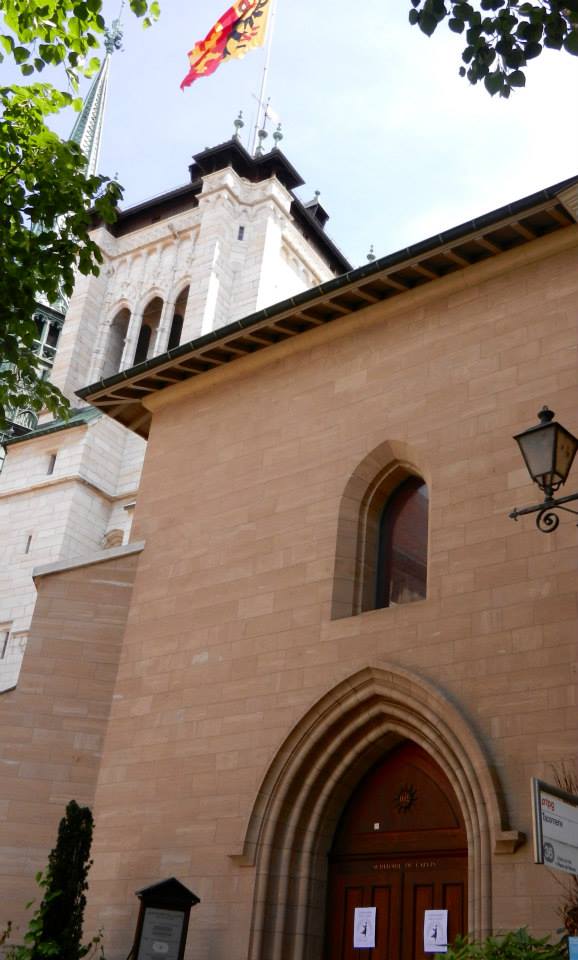This trip has been all about lessons in independence. So, with the clock counting down on my time in Geneva, I decided to tackle one of the remaining things on my list: hiking nearby Mont Salève. Salève is the easiest mountain to get to from Geneva – you can just take a bus to the end of the line. This was going to be my first solo hike, and I was a bit nervous but pretty excited.
Of course, things didn’t go to plan. Have I mentioned that I have a knack for getting lost?
Finding the trailhead was a bit of challenge off the bat – it seemed commonsensical to me that the trail would start near the cable car up to the top off the mountain, but it was actually several blocks away.
Luckily, trails in Switzerland are typically very well marked. That doesn’t mean, however, that they are foolproof. I had looked up trails prior to heading out and found two trails that looked appropriate for me. Arriving at the trail, however, there was only one blaze.
Well. I figured it would work.
Hiking alone was fun, to be honest. I knew how to get back home, I had basic first aid supplies, food, and my handy pocket knife. I kept my headphones on and when I felt like singing out loud (because yeah, that doesn’t happen in public), I did.
It was a gorgeous hike, but it was hard. It was about 35degrees Celsius out, with a chance of thunderstorms later that afternoon. Parts of the hike were quite vertical, and the path was mostly mid-size rock and very dry dirt, meaning a spent a lot of time slipping and falling on my butt.
However, it turns out I wasn’t going in the direction I thought I would be. After finally reaching the top of what started out as a nice set of etched stone stairs and ended as a set of knee-high hurdles, I found myself…in a village. An adorable, immensely quiet village called Monnetier-Monex. I wandered into the small church in the center of town and welcomed the brief moment in a cool, shady room, saying a prayer of gratitude to be here, as in Europe, as well as here…as in wherever the heck Monnetier-Monex was.
I then wandered the town (really, more like a dozen houses), running into a very kind old lady who insisted it was too hot for hiking and spent quite a while telling me, in both English and French, to get water from the town fountain – not quite understanding the concept of my Camelback nor the fact that the fountain was quite clearly marked “non potable.”
But that did remind me that it was mid-day, quite hot, and it was time for me to find this fabled cable car to take back down to Geneva.
Long story short, I didn’t find it. Because I was in France. Monnetier-Monex, France. And I did not want to take the cable car to France. I did not live in France.
After quite a bit of map studying and French translating, I realized that the correct car was still about a two hour hike away, and with the intense heat I just did not have enough water to make it (potable or not). My envisioned trip of climbing to a picturesque overlook to enjoy lunch, spend time with my journal, and take a relaxing cable car back to the city dissolved into a pool of sweat. So I turned tail and slipped and slid the way I had come up, taking my time, enjoying the view, still feeling quite proud of myself.







































































































